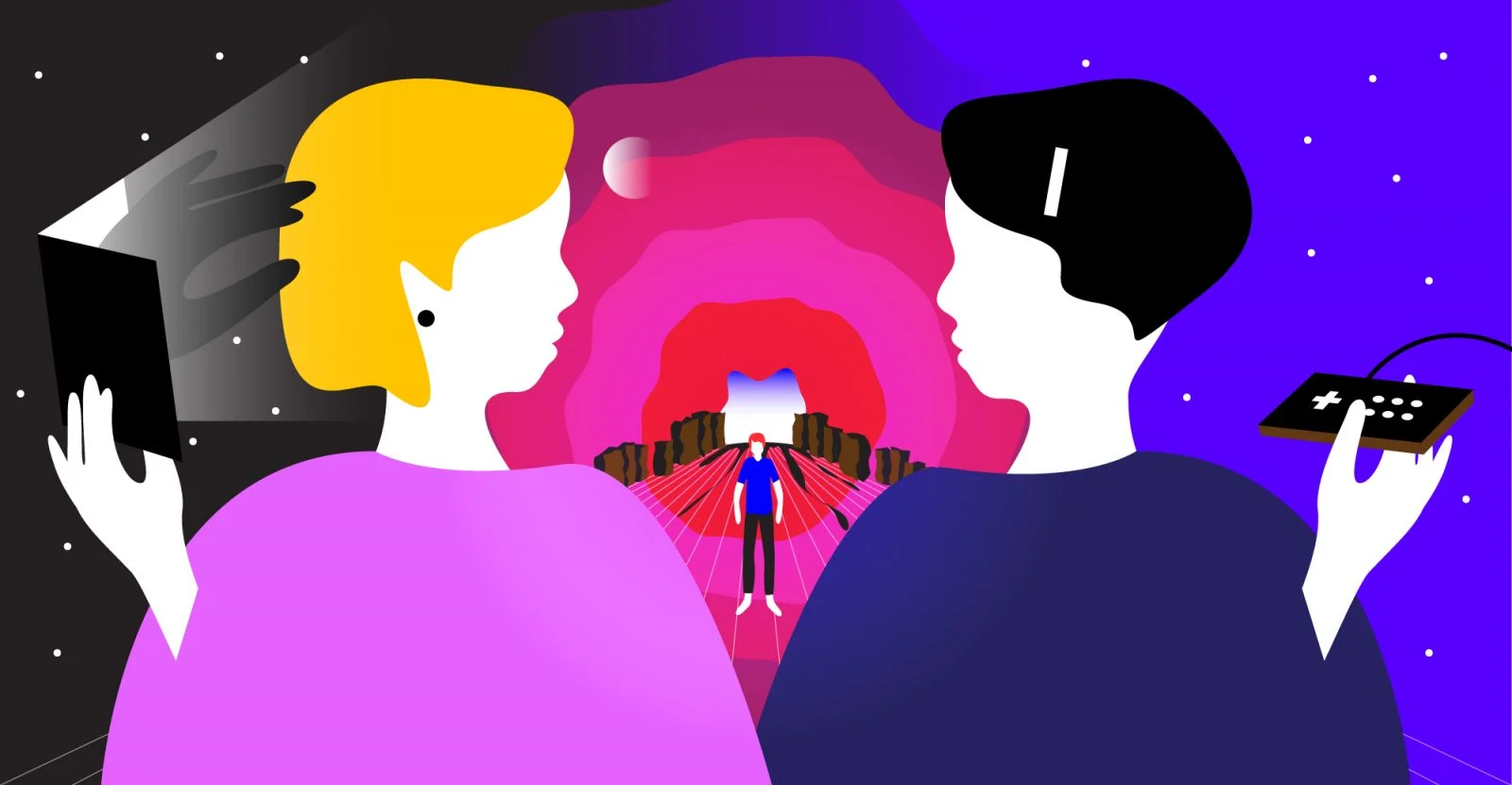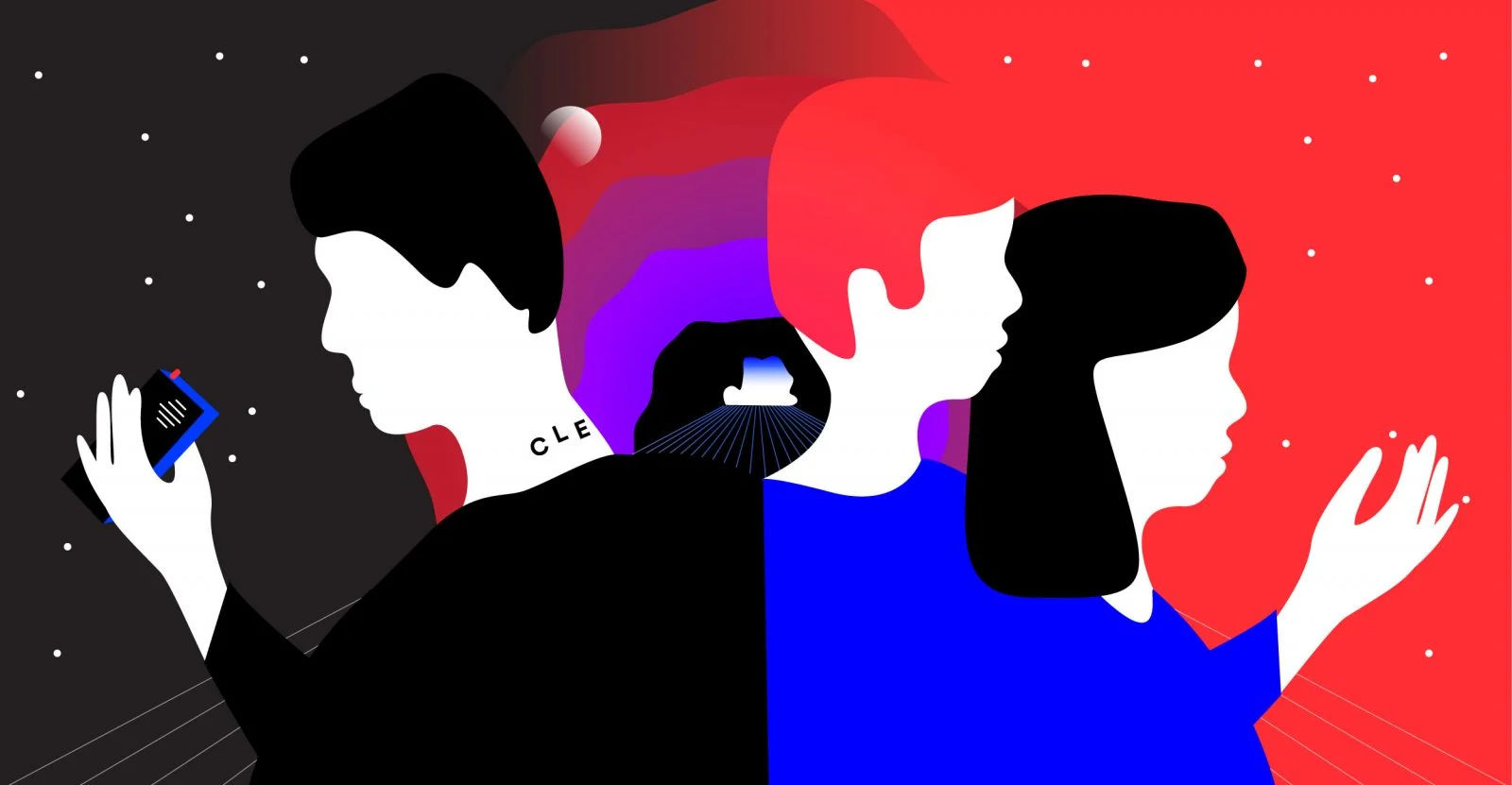
WePresent partnered with pioneering publishing platform McSweeney’s on a unique literary experience. Together, we commissioned writers Shelly Oria and Alice Sola Kim to collaborate on a single story, inspiring and challenging each other as they built it.
One author would write a chapter and send it to the other, who would take the tale off in whatever direction they felt was right. They would then send it back to the other writer and the process would continue across ten chapters.
Now, to mark the release of the immersive story, Camille Lindbom sat down with Alice and Shelly to reflect on this creative experience…

WeTransfer: How did this collaboration start?
Alice Sola Kim: It started out simply, and got more complex over time. Jordan Bass at McSweeney’s masterminded the process by bringing the two of us together. He didn’t have in mind a structure or any themes, really. We just knew we’d write a chapter each, alternating back and forth, for a total of ten chapters. Shelly got us going, by writing the very first chapter…
Shelly Oria: Which was freaking me out! I was going to write a chapter that would essentially create the world we were going to hang out in. I was feeling a strong sense of responsibility – well, that’s a polite word, it was more like dread – for setting the stage. I kept thinking, “What if Alice doesn’t like it?” And then she’s stuck with it.
ASK: The first chapter really speaks to Shelly’s work overall. It is very difficult, but also very generous, to suggest this enormous set of events and complicated world. She didn’t oppressively over-describe anything; there were so many directions I could go in, so many things I could focus on or elaborate on, that it felt really easy.
SO: I imagine that you probably felt the flipside of that, though, when you needed to write the ending of the whole story.
ASK: Yes, definitely. At that point, we had worked for almost a year together on this project. I had gotten to know Shelly’s writing, and really love it. I was happy with what we had created. It would’ve been terrible to ruin it all at the last moment. There was so much at stake.
WeTransfer: The two of you didn’t know each other personally. How did you manage to work well together?
ASK: I don’t have much history of collaboration. As a writer, I’m very secretive and private when I work on something. It’s hard for me to even just send work to a friend to get feedback. This was outside of my comfort zone, but it was really fun to get to know somebody in that way. We haven’t met much in person. We didn’t share much of our personal lives, but it feels like I know about her in a cool and interesting way. I love her brain and love her writing. Lots happened in the world and to us over the course of a year, but we’d still return to the project.
SO: I love collaborating. I find it artistically so exciting, fun, and inspiring. I like feeding off of someone else’s ideas and talent. Alice and I knew of each other from the literary world, but we hadn’t met in person when we started. When I would tell friends that we were working on this collaboration together, though, every single person that knew her would say, “That’s such a good fit!” Credit to McSweeney’s for the curatorial instincts.

WeTransfer: How was this collaboration different from other projects you’ve worked on?
ASK: It was interesting because you had to get used to a lack of control. You have control over your section, but once you hand it off, you don’t know where the story is going to go – what element Shelly will prioritize, which character she’ll decide to follow. You can’t plan ahead about what’s going to happen. You write your section and you hope that you’re building on what has come before and creating a way for things to happen afterwards.
SO: In a previous collaboration, I’ve shared the responsibility within each text: one person would start it, the other one would end it. The difference here is that one of us owned each chapter entirely; you’re responsible for one little baby within a larger baby. (I think I just called our novella a monster baby made of ten smaller babies!) Basically, I had full agency over my little unit, and I had to figure out the whole structure on my own.
WeTransfer: Did you ever talk about the plot during the process?
SO: We only talked after Chapter 1, and then again after chapter 5. That was it. I’ve gotten to learn from other collaborations that it’s best to let the creative process take the lead up until maybe 60% of the way through, and at that point talk.
ASK: It was time for a conversation. We did that in order to feel unified, and for there to be a sense of satisfaction or resolution at the end. We didn’t have to believe the same things, but we wanted to make sure we were on the same page. We talked about overall themes and characters, but not any specific direction. Then, we went back to passing chapters back and forth.
SO: Other than those two brief chats, we just trusted each other’s twists. I knew Alice would roll with what I wrote – no matter how dark or strange – and I was excited with each of her new sections. Like in Chapter 4, Alice basically created the whole friends’ group. It allowed me to pick up on that, and develop the characters’ different relationships. I would go back to that chapter, use her hints, and figure out what the friendships were like within the group.
ASK: I was pleasantly surprised by the perspectives Shelly chose to write from. She would strengthen relationships and delve into their pasts in ways I hadn’t predicted. It made the story a lot richer, creating this web of relationships. It’s one of these things that helped make the story feel like one whole piece.

WeTransfer: How would you advise readers to approach the story?
SO: I would probably ask them first about their habits when it comes to TV. Are they more of a Netflix binge person, or do they belong to the old model of one-episode-a-week? If you’re of the older model, try to read two stories at a time; you can still see our interactions, but you’re pacing yourself. If you’re a binger, just wait till the end and read the whole story.
ASK: For the story itself – as is often the case, with art – readers will probably start in a place of bewilderment and confusion. You’re thrown into a world you don’t know the terms of. Information is doled out to you slowly. I guess I would advise people to be ok with that confusion, with what feels strange or new. Keep moving forward, and let the world build upon itself.
WeTransfer: Trust the writers — trust that they will guide us through the story.
ASK: Yes, trust us, please!
WeTransfer: There is a clear link in the text to our current political environment. Was that a conscious choice?
ASK: Right now, we’ve been obsessing over the election and every related event. I think it couldn’t help but come through in our writing. It was a subconscious under-current for us, though; we worked on this project for a year. We certainly did bring an apocalyptic aspect to the story, but I think we offered hope for new beginnings, too.
SO: I do believe it is possible that we are approaching the end of days. That’s one way in which our collective narrative on earth can unfold, for both political and environmental reasons. We need to disrupt that, if we want to continue living here. So the idea of epidemics and the world ending – without using that language so directly – certainly seemed relevant.
Another aspect that mirrors the current political environment is our character Grayson’s simple language, which hides a dangerous kind of intelligence. When he explains his philosophy – evil though it is – it can sound reasonable at times. It’s part of what a character like Vedhika struggles with.
WeTransfer: Did you have different endings in mind?
ASK: By the nature of this collaboration, I didn’t want to have an idea of the ending until I got to my final section. This project was about each of us losing control over the narrative. I knew I had to decide whether it would be a happy or sad ending, though.
SO: I told Alice, “I put us in this world, so you get to do whatever you want for the ending,” and Chapter 10 might be my absolute favorite chapter! When she mirrored the backyard scene from Chapter 1, I literally had goosebumps. I loved it. I’m curious to hear how that scene came about in Alice’s head.
ASK: I’m glad you loved it. I thought, let’s unify the story by making it a circle. At the end of my last section, which is the end of the whole story, you’ll be mentally brought back to Shelly’s first chapter. To me it felt very pleasing to circle back to the beginning. Pleasing, and honest. Two things I love.
